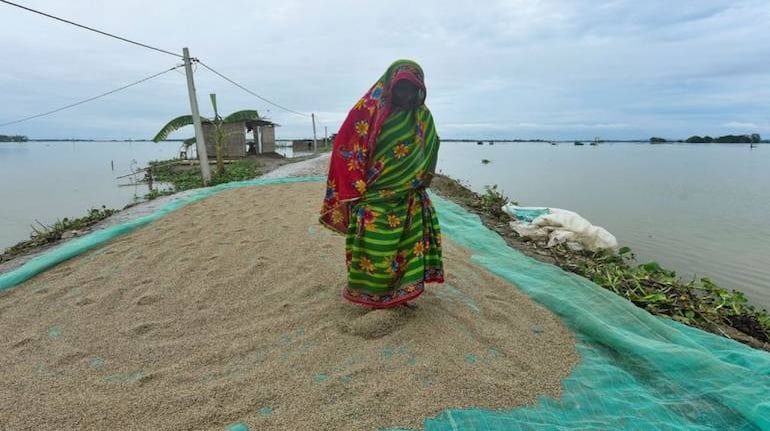



A slow start to monsoon rains has led to an 8 percent decline in the area under cultivation of kharif crops this season over the same period last year.
According to data from the National Food Security Mission, only 99.63 lakh hectare area was sown by June 17 compared to the 108.29 lakh hectares sown a year ago.
The June-September rains are the lifeblood of Indian agriculture, watering almost half of the country’s farmland that doesn't have access to irrigation. This is the period when summer crops such as rice, cane, corn, cotton and soya bean are planted.
Both rice and coarse cereals have seen more than a 30 percent decline in area under cultivation this year. Rice has only been sown in 8.73 lakh ha, compared to 12.52 ha in 2021. Coarse cereals have only been sown in 6.81 lakh ha, down 2.91 lakh ha over the last year.
According to the Indian Meteorological Department (IMD), 236 of the total 703 districts have reported deficient rainfall in June so far, while rains have been normal in 102 districts.
“It looked like the monsoon had hit a roadblock as it entered the third week,” GP Sharma, president (Meteorology), of private forecaster Skymet Weather, said. “The country received deficient rainfall as far as the agriculture sector is concerned.”
The met office, however, expects monsoon to pick up soon and the country will receive normal rainfall this year. “The countrywide rainfall deficit has decreased from 43 percent on June 11 to 18 percent on June 17,” Mrutyunjay Mohapatra, Director General, IMD, said.
(With inputs from PTI)Discover the latest Business News, Sensex, and Nifty updates. Obtain Personal Finance insights, tax queries, and expert opinions on Moneycontrol or download the Moneycontrol App to stay updated!
Find the best of Al News in one place, specially curated for you every weekend.
Stay on top of the latest tech trends and biggest startup news.